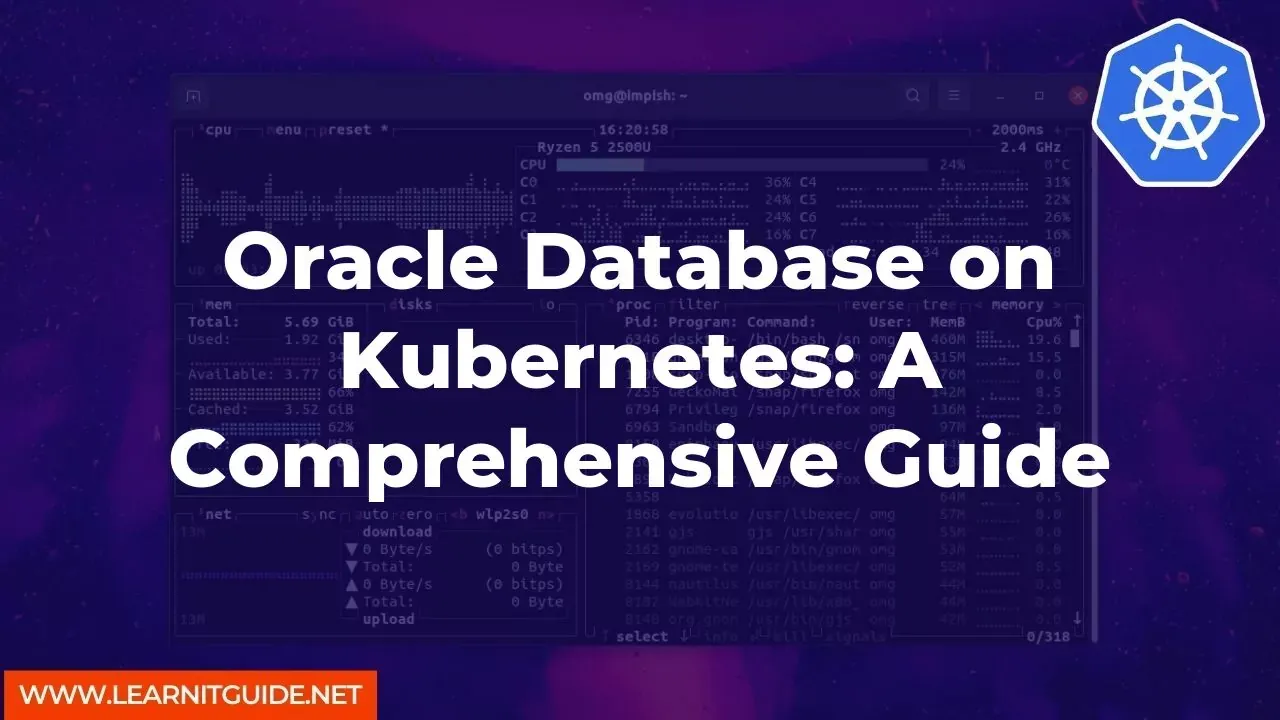Kubernetes is an open-source container orchestration platform that has gained popularity in recent years due to its ability to simplify application deployment and management. Oracle Database is a relational database management system widely used in enterprise environments.
Combining the power of Kubernetes and Oracle Database can be a game-changer for organizations looking to streamline their database deployment and management processes.
In this article, we will provide a comprehensive guide on how to deploy and run Oracle Database on Kubernetes. We will cover topics such as creating a Kubernetes cluster, deploying Oracle Database on Kubernetes, and managing the database using Kubernetes.
Creating a Kubernetes Cluster:
Before we can deploy Oracle Database on Kubernetes, we need to create a Kubernetes cluster. Here are the steps to create a Kubernetes cluster:
Choose a cloud provider or an on-premises infrastructure to deploy your Kubernetes cluster.
Install Kubernetes on your infrastructure by following the documentation provided by the Kubernetes community or your infrastructure provider.
Create a Kubernetes cluster by following the instructions provided by the Kubernetes documentation or your infrastructure provider.
Deploying Oracle Database on Kubernetes:
Once you have created your Kubernetes cluster, you can deploy Oracle Database on it. Here are the steps to deploy Oracle Database on Kubernetes:
Download the Oracle Database container image from the Oracle Container Registry or Docker Hub.
Create a Kubernetes deployment manifest file that defines the Oracle Database deployment configuration. Here is an example of a deployment manifest file:
apiVersion: apps/v1
kind: Deployment
metadata:
name: oracle-db
labels:
app: oracle-db
spec:
replicas: 1
selector:
matchLabels:
app: oracle-db
template:
metadata:
labels:
app: oracle-db
spec:
containers:
- name: oracle-db
image: oracle/database:19.3.0-ee
ports:
- containerPort: 1521
env:
- name: ORACLE_PWD
value: MyPass123
- name: ORACLE_CHARACTERSET
value: AL32UTF8
- name: ORACLE_SID
value: ORCLCDB
- name: ORACLE_HOME
value: /opt/oracle/product/19c/dbhome_1
- Apply the deployment manifest file to your Kubernetes cluster using the kubectl apply command:
kubectl apply -f deployment.yaml
- Verify that the Oracle Database deployment is running by checking the status of the deployment:
kubectl get deployments
Managing Oracle Database on Kubernetes:
Kubernetes provides several tools for managing Oracle Database on Kubernetes. Here are some useful commands for managing Oracle Database on Kubernetes:
- To scale up the Oracle Database deployment, use the kubectl scale command:
kubectl scale deployment/oracle-db --replicas=2
- To view the logs of the Oracle Database container, use the kubectl logs command:
kubectl logs -f deployment/oracle-db
- To connect to the Oracle Database container, use the kubectl exec command:
kubectl exec -it deployment/oracle-db -- /bin/bash
In this article, we have provided a comprehensive guide on how to deploy and manage Oracle Database on Kubernetes. We have covered topics such as creating a Kubernetes cluster, deploying Oracle Database on Kubernetes, and managing the database using Kubernetes.
By leveraging the power of Kubernetes and Oracle Database, organizations can simplify their database deployment and management processes, leading to increased efficiency and productivity.
Related Searches and Questions asked:
That's it for this post. Keep practicing and have fun. Leave your comments if any.








0 Comments